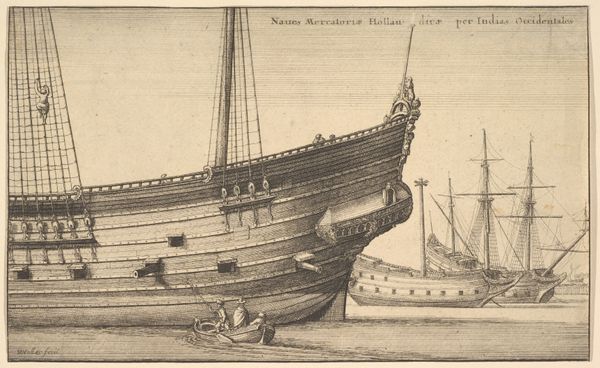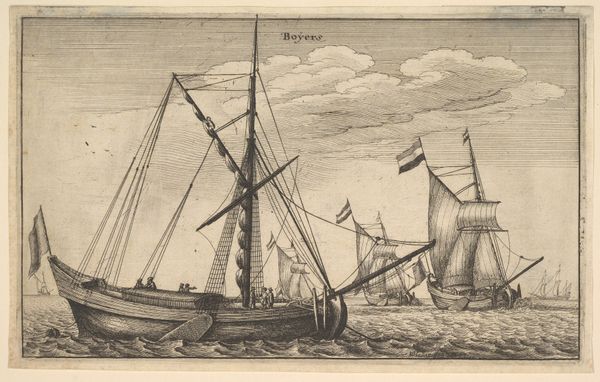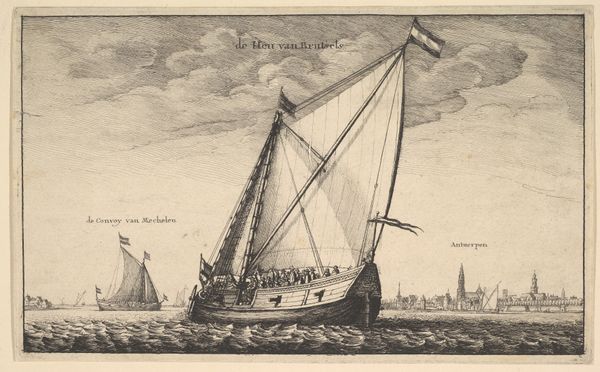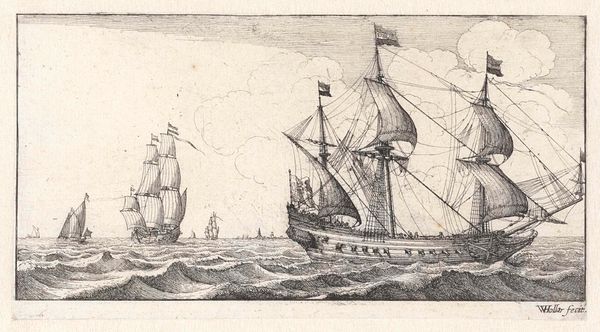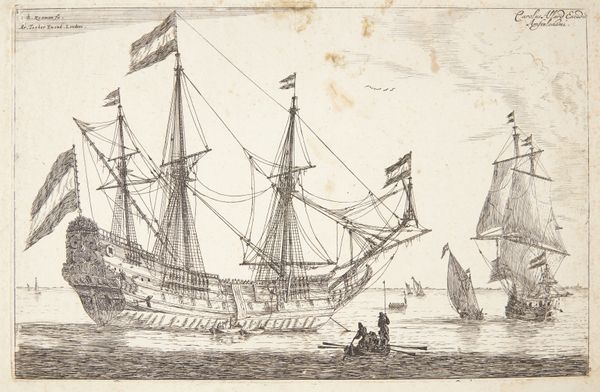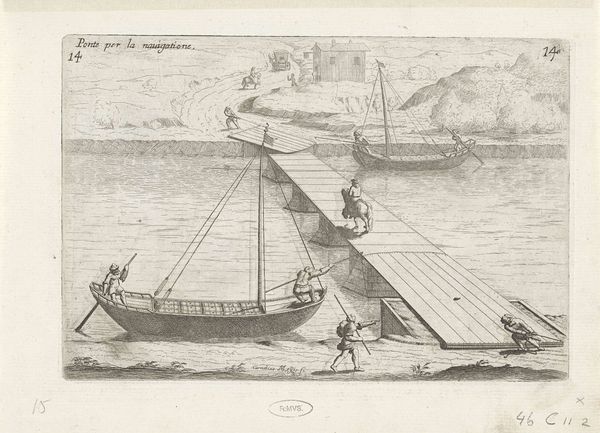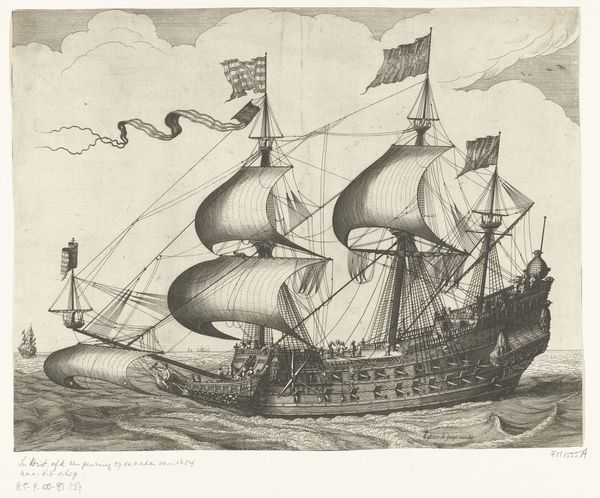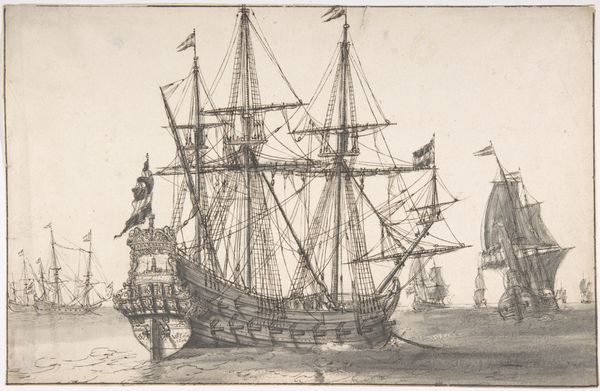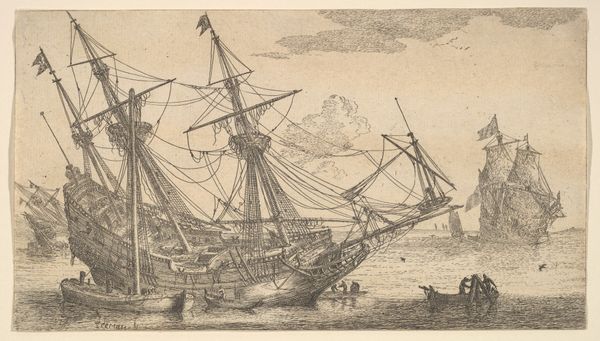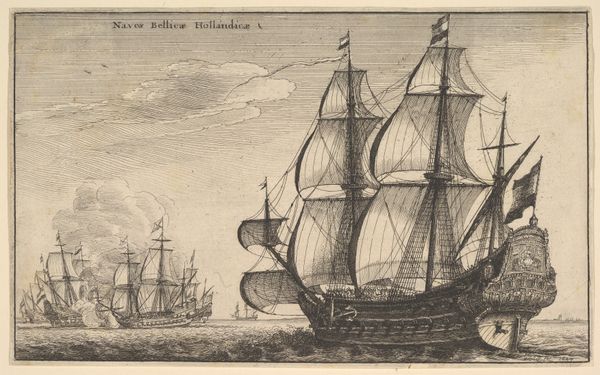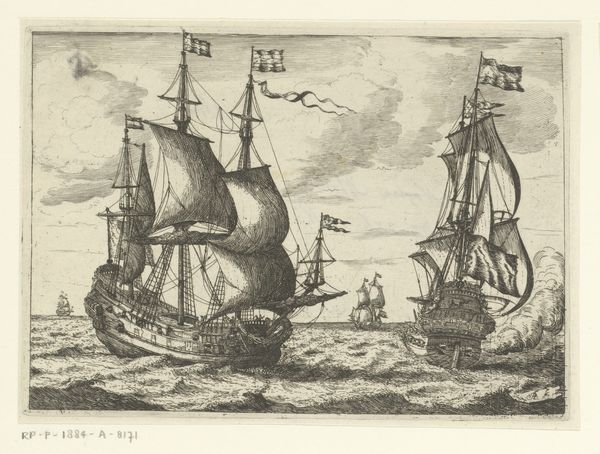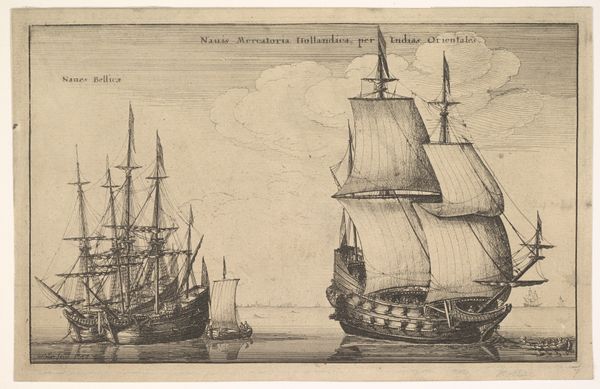
Naues Mercatoriæ Hollandicæ per Indias Occidentales (Dutch West Indiaman) 1647
0:00
0:00
drawing, print, engraving
#
drawing
#
baroque
# print
#
cityscape
#
engraving
Dimensions: Sheet: 5 3/4 × 9 5/16 in. (14.6 × 23.6 cm)
Copyright: Public Domain
Editor: This is "Naues Mercatoriæ Hollandicæ per Indias Occidentales (Dutch West Indiaman)," an engraving by Wenceslaus Hollar from 1647. I'm immediately struck by the sharp details despite the subject matter being maritime. The closer ship looms large, and the rigging seems incredibly intricate. How do you interpret the impact of the lines and textures within this composition? Curator: The orchestration of line and texture is indeed paramount. Notice the contrast between the tight hatching that defines the hull of the closest vessel and the sparser, more delicate lines suggesting the sky and distant ships. Hollar masterfully employs the burin to create a hierarchy of forms, guiding the eye through the composition. It's a study in contrasts, is it not? Consider also how the lines converge toward the vanishing point. What does that focal point emphasize, structurally speaking? Editor: It does seem to emphasize the grandeur of the Dutch ship and perhaps its implied destination. The lines direct your sight toward the open sea, implying a journey. Would you say that the contrast in texture adds to the visual dynamism of the scene? Curator: Precisely. The visual dynamism is a direct consequence of the interplay between areas of dense, concentrated line and regions of relative emptiness. This calculated juxtaposition invigorates the composition, preventing it from becoming static or predictable. Also, reflect on how the ornamental details draw our eyes across the form and balance its movement within the pictorial space. Editor: I hadn't considered that. Looking closely now, it's as if Hollar is creating movement using only stillness. It’s fascinating. Curator: The ability to imply motion through the manipulation of static elements is, arguably, a hallmark of Hollar’s technique. This work demonstrates that the visual power resides in the structured elements rather than just historical context. Editor: Thank you; seeing it in that formal, structured way has really clarified Hollar's visual intentions. Curator: Indeed. Nuance in form allows for layers of interpretive value.
Comments
No comments
Be the first to comment and join the conversation on the ultimate creative platform.
